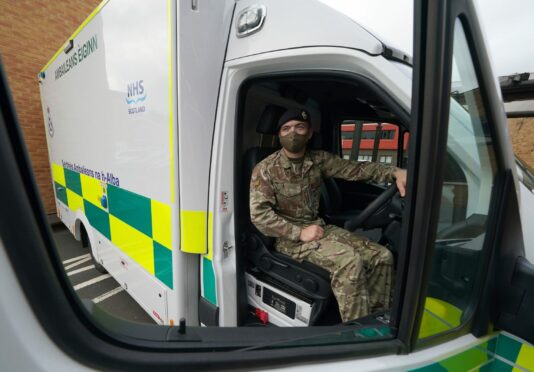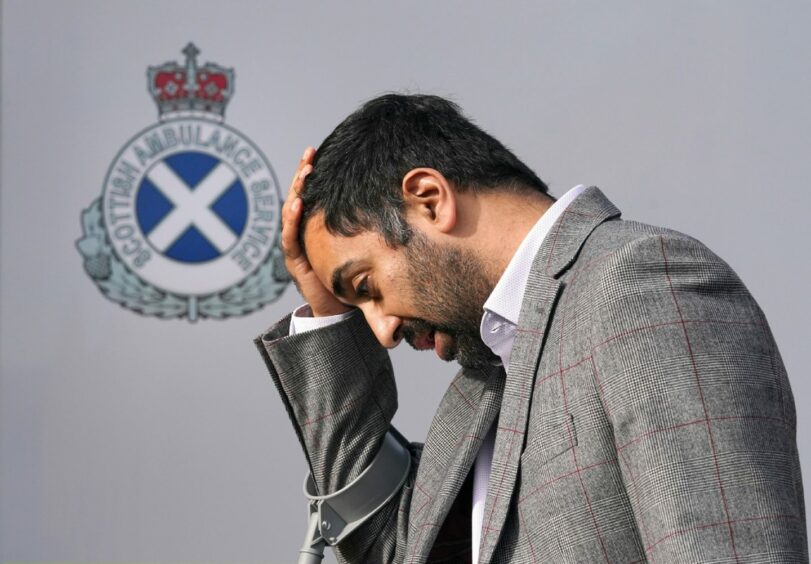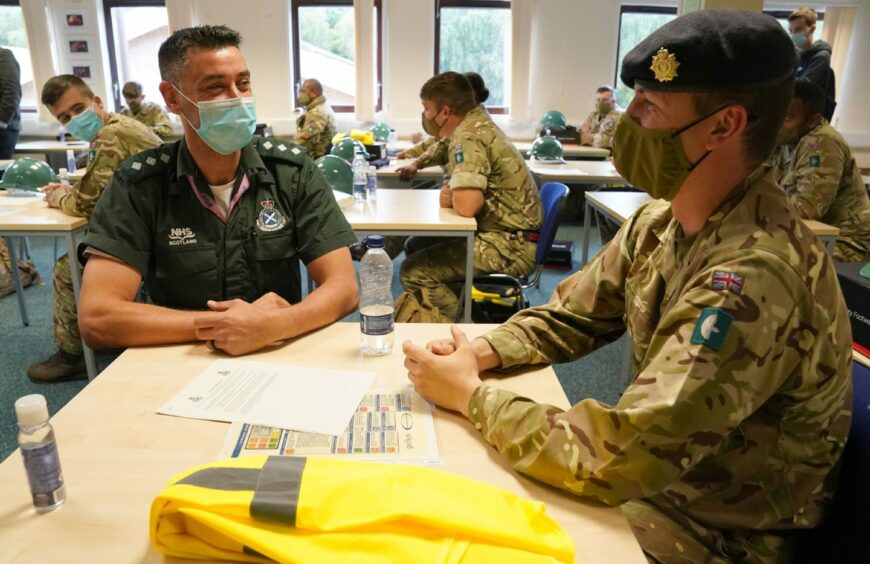Army drivers brought in to tackle the ambulance crisis cannot “blue light” seriously ill patients to hospital, it has emerged.
A Scottish Ambulance Service (SAS) memo has stressed that Army helpers are “not emergency drivers and cannot drive on blue lights”.
The document, leaked to the Daily Record, has prompted renewed claims from Unite and opposition politicians for Scottish Government to rethink how they use the Army.
Last week, Health Secretary Humza Yousaf announced a raft of measures to ease ambulance waiting time crisis, with 225 military personnel among those drafted in to work at three command centres, including Inverness.
But a week on, Unite has claimed the changes have made “no difference” and insist field hospitals would be a better way to use the Army.
Some paramedics have echoed this, claiming that bringing in the military has actually increased waiting times at some hospitals, as Army drivers drop off large numbers of non-emergency patients at under-pressure A&Es.
They also fear patients could be put at “severe clinical risk” as a result of Army drivers being unable to use blue lights.
‘It defeats the whole purpose’
Jamie McNamee, Unite’s convener at SAS, told the Record: “These drivers can only be sent to non-emergency calls where otherwise patients may be waiting seven or eight hours for a response. But that puts them in the frontline.
“And when they get to the call, things may be different than they expect. It could be they are called out to someone with a severe asthma attack but when they arrive, a clinician realises the patient is having a heart attack.
“In that situation, it is a blue light to the nearest hospital – but the military driver can’t do it because he can’t drive with a blue light and the clinician can’t drive because he needs to remain in the back with the patient.
“He will have to drive without blue light or call another ambulance – which defeats the whole purpose.”
Unite today renewed its calls for field hospitals or temporary admission wards.
Mr McNamee added: “It doesn’t matter how many extra ambulances we have on the road, unless they deal with patient flow at hospitals, we are just going to be sitting in an even bigger queue to get into accident and emergency.
“If there are 50 more ambulances, it just means 50 extra joining the queue. They need to get more beds. The government has admitted they are 1,000 beds short and that’s the nub of everything.”
Army must be used in most ‘effective way’
Fresh figures from Public Health Scotland yesterday revealed the country has the lowest number of hospital beds in a decade. There were 12,869 staffed beds available on average each day last year, a 9.5% decrease from the 14,227 per day in 2011-12.
Labour’s health spokeswoman Jackie Baillie said: “It is absolutely vital that the Army is deployed in the most effective way possible. We cannot have even longer waits for ambulances and A&E.
“It’s high time that the SNP listened to frontline staff and their unions to learn how best to utilise the help of the Army. Field hospitals are essential to ensure the people of Scotland are able to receive the care they deserve.”
A SAS spokeswoman said: “Although the military personnel are primarily focused on our lower acuity emergency and timed admissions calls, for example falls, they can be sent to all categories of emergency call.
“If deployed to an emergency, the trained clinician can drive to the scene on blue lights, with the military driver driving to hospital with the patient on board under normal road conditions.
“If there is the need to transport the patient to hospital under emergency ‘blue light’ conditions, then the crew will request back up.”
A Scottish Government spokesman said: ”Military personnel will have an important role to play in lower acuity emergency calls – and their deployment will help improve overall response times and increase capacity.
“It will also free up existing SAS clinicians to be available for more immediately life-threatening calls – as well as helping to reduce workload and wellbeing pressures on SAS crews.
“We have set out a £20million package of additional support for the service. We’re working closely with SAS and health boards to ensure ambulances are cleared from hospitals as quickly as possible, including the establishment of temporary admissions wards to ease pressure on A&Es.”


